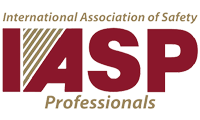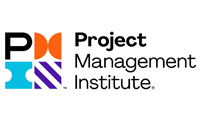A workplace devoid of injuries and accidents is attractive to employees. In such an environment, employees are happier and more productive.
A secure workplace is essential for both employees and employers. All personnel have the right to safety in the workplace. Safety in the workplace is essential regardless of the scale of the business. All businesses, regardless of size, must implement safety measures in the workplace. Effective safety measures keep workers protected and safeguard industrial equipment. Employers have the responsibility and obligation to protect and safeguard their employees.
Why is Safety in the Workplace Necessary?
It is impossible to quantify the impact of human deaths. They can have grave repercussions for employees as well as their families and acquaintances. This is why safety and health measures in the workplace are necessary. They are vital to the welfare of both employers and employees. More important than anything else is the sense of security one has in knowing he will return home securely from work.
Every company faces occupational safety and health hazards. Unsafe working conditions, environmental hazards, substance addiction, and workplace violence all affect workplace safety.
For instance, IT employees may be required to operate with faulty wires or electronics. In contrast, construction workers may be exposed to hazards associated with operating heavy equipment. To combat these risks, employers must develop strategies to assure and promote workplace safety. Employers should also determine the intended safety and security characteristics of their employees. This will aid in enhancing the efficiency and quality of the products and services.
Here are some advantages of a safe and healthful workplace:
- The safer the workplace, the greater the productivity. Productive workers are an asset for all businesses. For example, productive employees can generate more output in less time, thereby reducing operational expenses.
- Safety in the workplace promotes the health of both employees and employers. Improved safety results in improved health. Healthier employees perform duties more effectively and are generally happier.
- Very few accidents occur in a secure work environment. This results in reduced downtime for safety investigations and lower worker’s compensation costs. This also reduces the time required for injured employees to recover.
- Damage to industrial equipment incurs replacement and repair costs. Avoiding workplace injuries and industrial equipment damage will reduce costs and increase profits.
- If employers are concerned about their employees’ welfare, employees are generally more confident and at ease. Additionally, rates decrease and employees become more focused on their duties.
Being Aware of and Recognizing Workplace Dangers
This is the initial stage in establishing a safe workplace. Employers must first identify hazards and safety concerns in the workplace. Then they must take the necessary measures to address them. Safety hazards in the workplace can include mechanical issues, hazardous substances, dangerous electrical equipment, etc.
In the workplace, mechanical issues can arise at any moment when operating machinery. Additionally, operating hefty machinery is extremely hazardous and can result in accidents. If employees must deal with chemicals, they must exercise extreme caution. Chemicals that are hazardous can injure or poison employees. Inhaling or ingesting them can even result in fatalities.
Additionally, working with electronic equipment can pose hazards. Faulty electrical equipment can electrocute employees, causing severe problems.
Employees should be aware of the varieties of equipment in their workplace and the dangers present. This enables them to avoid such threats and unfortunate circumstances. In addition, employers must instruct workers in the appropriate operation and maintenance of machinery and equipment.
Implementing Safety Programs in the Workplace
Obtaining employee commitment to workplace safety is the first step in establishing a safety programme. Including workplace safety in the company’s mission statement is one method to achieve this. Every employee should be responsible for implementing the safety policies.
Employers should investigate all workplace accidents. They must encourage workers to adhere to all safety procedures.
Moreover, employers should include in writing the risks associated with failing to comply. This reduces the likelihood of making errors.
Providing Employees with Appropriate Safety Education
Training is an essential component of every company’s safety programme in order to safeguard employees from accidents. According to research, new employees have a greater risk of workplace accidents. This greater risk is caused by a lack of knowledge regarding workplace hazards and appropriate work techniques.
Employers should provide the necessary training to employees in order to reduce workplace accidents. Employees should operate all machinery and equipment properly and securely. For instance, employers should adequately instruct employees on how to operate heavy apparatus. Only trained or certified personnel should operate such machinery. It is essential, therefore, that employees receive safety training from trained professionals.
Utilization of Safety Equipment
The use of protective gear to reduce exposure to hazards that cause workplace injuries is crucial. Failure to do so can result in injury or even fatality. Workers may be exposed to chemicals, appliances, electronics, and other potential workplace hazards. These personnel must be provided with personal protective equipment by their employers (P.P.E.).
The design, fabrication, and fit of PPE should prioritise safety. Gloves, protective eyewear, garments, earplugs, hard hats, etc. are examples of PPE.
Communicating Hazardous Workplace Conditions
Employees must inform management of any safety hazards or work risks. Employers are required by law to provide secure working conditions for their employees. They must eliminate workplace safety hazards and promote workplace safety.
Adopting Correct Posture Incorrect posture is one of the leading causes of back discomfort. It is essential to maintain proper posture in order to reduce the risk of injury.
For example, if you must sit for extended periods of time, use chairs that are specially designed. Additionally, always remain upright.
Reducing Workplace Stress Workplace stress can lead to numerous health issues, such as anxiety and depression.
Job insecurity, workplace harassment, a heavy caseload, etc., all contribute to workplace stress.
Learn how to combat tension in the workplace and avoid its negative effects. Workplace tension can have drastic effects on employee health and productivity.
Promotion of Frequent Pauses
Employers should encourage regular break taking. Frequent pauses will prevent fatigue and weariness. This will prevent injuries and ailments even further. Breaks assist employees maintain their focus and energy.
Keeping Sober and Aware
Substance addiction is one of the leading causes of fatalities at work. Approximately forty percent of all industrial workplace fatalities are caused by substance addiction.
Under the influence of alcohol or drugs, individuals are less attentive. Their capacity for decision-making, coordination, concentration, and motor control are impaired. This increases the likelihood of workplace injuries and fatalities.
Accessibility to Exits in Case of Emergencies
It is essential to have easy access to emergency exits in case of an emergency. Accessibility to emergency exits will decrease injuries and fatalities. In addition, it is essential to have quick methods to shut down equipment in the event of an emergency.
Utilizing Mechanical Help
An industrial position may require employees to operate heavy machinery. There are numerous injury hazards associated with lifting and moving heavy objects. The use of a conveyor belt, a forklift, or a wheelbarrow can replace manual hauling by employees.
The Conclusion
Good enterprises throughout the world provide a safe working environment. Every employee desires assurance of his or her safety and protection.
Workplace safety is an essential concern. Employers should provide a secure working environment for their employees.
It is the responsibility of management systems and business proprietors to promote workplace safety. Employers should encourage workers to embrace safe practises and utilise protective equipment. They ought to promote safety policies and programmes.







